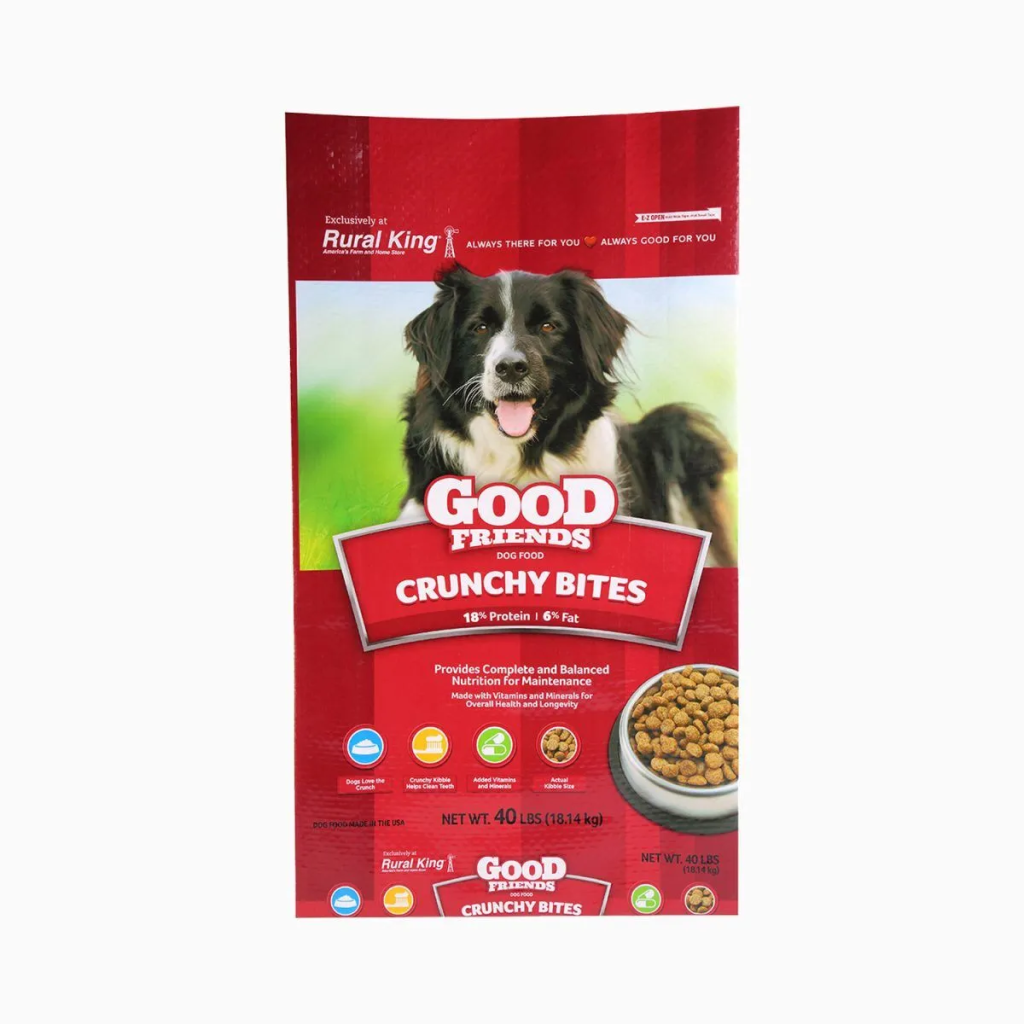
Main Answer: Woven Fabric Bags offer unmatched durability, cost efficiency, and eco-friendliness, while customizable features like valve ports, handles, and prints cater to diverse industries—from agriculture to luxury retail.
1. The Superiority of Woven Fabric Bags: Material Advantages
1.1 Durability and Load-Bearing Capacity
Woven Fabric Bags, crafted from interlocking polypropylene (PP) or polyester fibers, provide exceptional tensile strength (800–1,200 N/m², ISO 13934-1). Their woven structure resists tears and punctures, ideal for heavy-duty applications.
- Example: A fertilizer company reduced bag breakage by 65% after switching to PP Fabric Bags with 120 GSM fabric, saving $12,000 annually in replacement costs.
Table 1: Strength Comparison
| Material | Tensile Strength (N/m²) | Common Use Case |
|---|---|---|
| Woven PP | 1,000–1,200 | Construction materials |
| Non-woven PP | 200–400 | Disposable shopping bags |
| Cotton | 300–500 | Retail packaging |
1.2 Cost Efficiency and Sustainability
Woven Fabric Sacks are 30–50% cheaper than rigid containers over their lifecycle. They’re also recyclable, aligning with EU Circular Economy goals.
- Case Study: A coffee exporter cut packaging costs by 40% using recyclable PP Fabric Bags, while achieving a 25% reduction in carbon footprint (source: Sustainable Packaging News).
Q&A: Are Fabric Bags eco-friendly?
Q: How do they compare to plastic alternatives?
A: Reusable Woven Fabric Bags can replace 500+ single-use plastic bags, per a 2023 UNEP report.
1.3 Breathability and Contamination Resistance
The woven structure allows controlled airflow (5–15 CFM/ft²), preventing mold in agricultural products.
- Example: A poultry feed brand reduced spoilage by 30% using breathable Fabric Woven Bags with 80 GSM fabric, validated by USDA testing.
2. Customization: Tailoring Fabric Bags to Market Needs
2.1 Functional Customizations
2.1.1 Valve Ports and Handles
- Valve Ports: Enable dust-free filling of powders.
- Case Study: A cement manufacturer increased filling speed by 50% using valve-equipped Woven Fabric Sacks.
- Ergonomic Handles: Reinforced loop handles support 15–30 kg loads.
Table 2: Handle Load Capacities
| Handle Type | Max Load (kg) | Material |
|---|---|---|
| Die-Cut Handles | 15 | Laminated PP |
| Spouted Handles | 25 | High-density PE |
| Gusseted Handles | 30 | UV-stabilized PP |
2.1.2 Size, Thickness, and Shape
- Thickness: 80–200 microns for heavy-duty use (e.g., 150 microns for 50 kg animal feed).
- Custom Shapes: Quad-seal Fabric Woven Bags prevent bulging during stacking.
Example: A pet food brand adopted trapezoidal PP Fabric Bags to optimize pallet space, cutting shipping costs by 18%.
2.2 Aesthetic and Branding Customizations
2.2.1 High-Resolution Printing
Digital printing allows CMYK designs with <0.1 mm precision, enhancing shelf appeal.
- Case Study: A luxury tea brand boosted sales by 22% using gold-foil-printed Woven Fabric Sacks (source: Packaging Digest).
2.2.2 Material Blends
- Laminated Woven Bags: BoPP coatings add moisture resistance for tropical climates.
- Kraft-PP Hybrids: Combine recyclability with vintage aesthetics.
Q&A: How durable are printed designs?
Q: Will prints fade during shipping?
A: UV-cured inks withstand 500+ hours of accelerated weathering (ASTM G154), ensuring brand integrity.
3. Industry-Specific Applications
3.1 Agriculture: Preventing Spoilage
Breathable Fabric Woven Bags with 100–120 GSM fabric reduce grain moisture content by 15%, per a 2022 study in Agriculture Journal.
3.2 Chemicals: Safety and Compliance
Anti-static PP Fabric Bags with carbon coatings meet OSHA 1910.1200 standards, preventing electrostatic discharge in flammable environments.
3.3 Retail: Luxury and Sustainability
Custom Printed Fabric Bags with recycled PET liners appeal to eco-conscious consumers, driving 35% higher repeat purchases (Nielsen 2023).
4. FAQs: Addressing Key Concerns
Q1: What’s the maximum weight capacity for Fabric Bags?
A: Heavy-duty FIBC Bags hold up to 2,000 kg, while standard Woven Fabric Sacks carry 10–50 kg.
Q2: Can these bags withstand extreme temperatures?
A: UV-stabilized variants resist -30°C to 80°C, ideal for global logistics.
Q3: How do I choose between PP and polyester?
A: PP Fabric Bags are cost-effective for dry goods, while polyester suits acidic/alkaline materials.
5. Conclusion
Woven Fabric Bags are a versatile, sustainable solution for industries prioritizing durability and customization. By selecting parameters like 150-micron thickness, valve ports, or eco-friendly inks, businesses optimize costs and compliance.
For insights into innovative laminated designs, explore our guide to advanced Fabric Woven Bags. To learn about industry-specific solutions, visit our analysis of customizable PP Fabric Bags.
Data sourced from ISO standards, Nielsen Consumer Reports, and peer-reviewed studies in Agriculture Journal and Packaging Technology & Science.